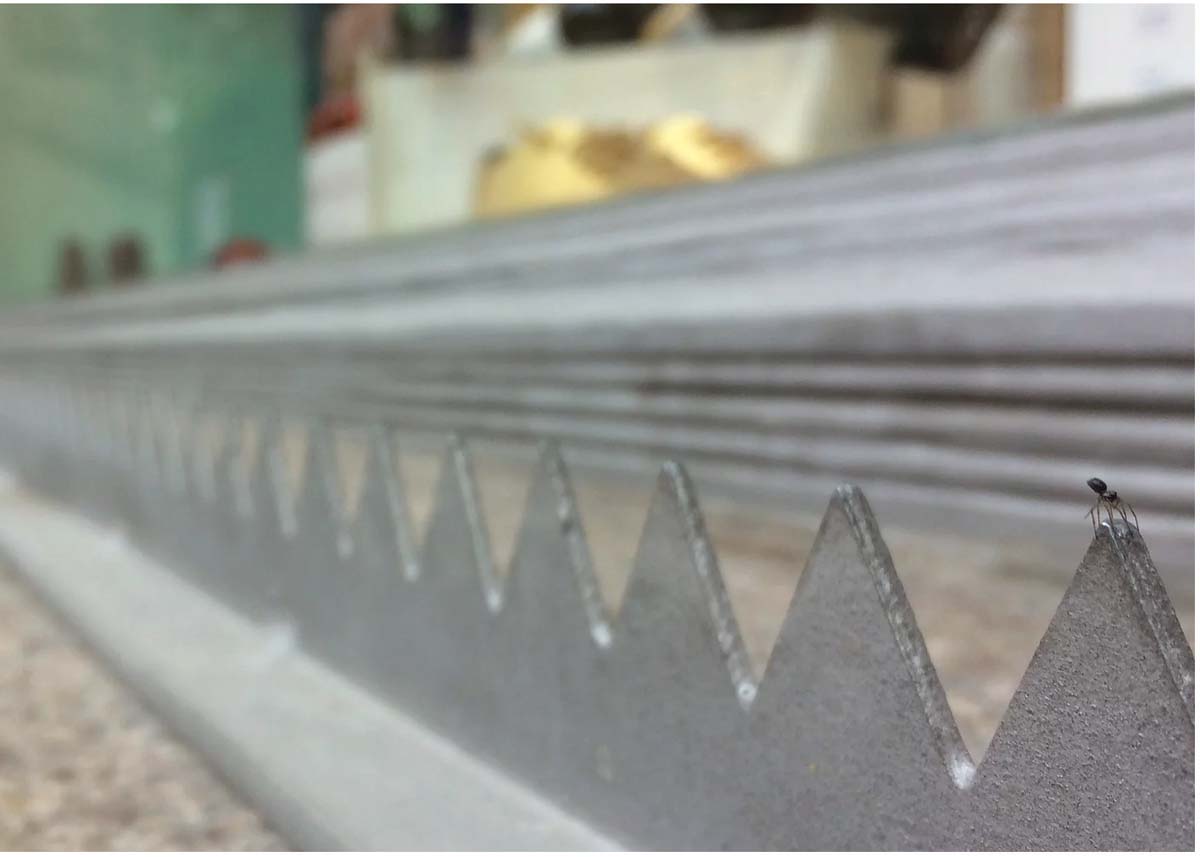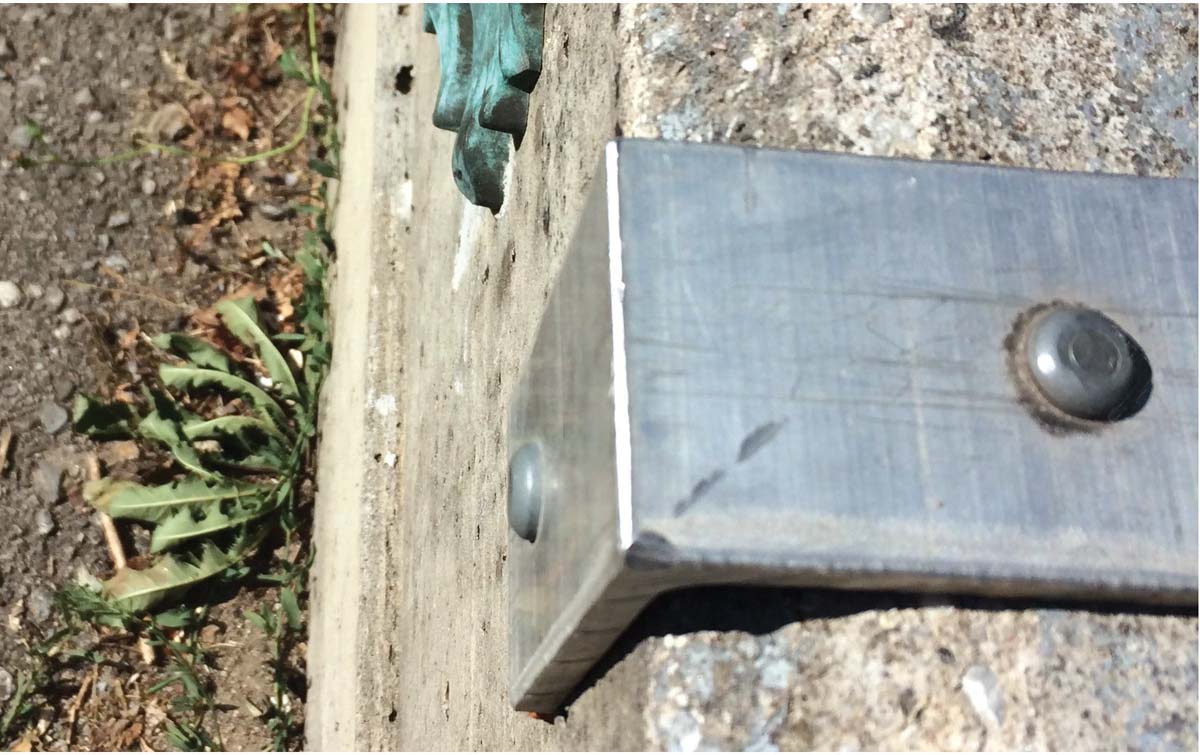Don’t Get Defensive
Defensive urbanism pervades our cities. Pamela Young looks at how architects can fight back by creating more inclusive designs.

Recently, a bench I’d barely noticed on countless walks past acquired an eye-catching sticker labeling it a DESIGN CRIME. “This item is a design against humanity,” the small print under the blaring red letters declared. “It has been added to the international database of Hostile Design.” The bench, on an easement alongside a seniors’ residence, was a backless chunk of concrete with a central armrest. British artist Stuart Semple set up the website HostileDesign.org to highlight the global proliferation of benches you can’t lie down on, ledges with anti-sitting spikes or anti-skateboarding protrusions, and other design features sending the message that certain groups—most often the unhoused, or youth—are unwelcome to linger. He sells DESIGN CRIME sticker sheets and also gives them away to those who can only afford the postage.

Cara Chellew, formerly based in Toronto and now pursuing a Ph.D. in Urban Planning, Policy, and Design at McGill University in Montreal, is a public space advocate and researcher in the field of hostile design, which is also called defensive design or defensive urbanism. The map on her defensiveTO.com site documents public realm spaces and privately owned publicly accessible spaces (POPS) throughout Toronto that manifest defensive urbanism. Sometimes it’s what’s not there is that makes the design defensive: “Maybe there was a spot in a parkette where there used to be benches, but they were later removed.” Chellew calls these subtractions “ghost amenities.” Permanently out-of-service drinking fountains, locked or non-existent park washrooms, and ‘shade structures’ that filter sunlight but let rain flood through all have an impact on how shared outdoor space can be used—and who uses it.

What is defensive may also be disingenuous. Municipalities and POPS owners frequently justify central armrests as an aid to mobility-challenged individuals (and a means of preventing one person from monopolizing a bench). Ergonomists Chellew has consulted say that only some commonly used armrest styles and placement points actually assist people who have difficulty sitting or rising.

At a time when a burgeoning number of Canadians are unhoused or precariously housed, how can we create public spaces that people from all walks of life can comfortably share? Chellew raises the possibility of constructing service kiosks in urban parks, staffed by people with expertise in harm reduction and de-escalating conflict, and providing resources such as needle disposal.

Nadia Galati, a principal at PROCESS, a Toronto-based engagement, communications and planning studio, cites deliberative engagement as a valuable industry tool. Galati leads the consultation process for park space and recreation facility redevelopment at Toronto’s Moss Park, a neighbourhood where lived experience and tax brackets vary considerably. PROCESS has a budget for paying members from typically underrepresented community sectors to participate in meetings, disseminate information within their communities, and obtain feedback. Payment at the highest participation level (project champion) is just under $2,000. Input collected by project champions and local champions is shared at formal public meetings—events that generally attract more affluent residents in disproportionate numbers. “Can you build empathy? Can you get to where people can see each other?” Galati asks. “I think if when you design, you think about the most vulnerable person in your community, you serve everyone, because then everybody’s needs are met.”
Pamela Young is a Toronto-based writer and communications manager.
